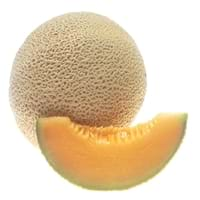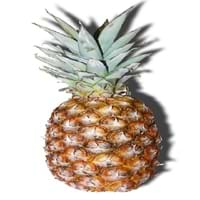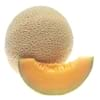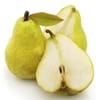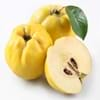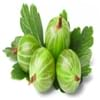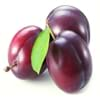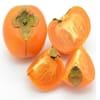Health Benefits
Cancer prevention, Heart care, Improves eye vision, Prevents diabetes, Reduces stress
Asthma treatment, Bronchitis treatment, Cancer prevention, Heart care, Increases metabolic rate
General Benefits
Boosts immune system, Cures cough, Cures fever, Digestive aid, Eye care, Helps in weight loss
Anti-inflammatory properties, Controls blood pressure, Digestive aid, Eye care, Healing of wounds, Maintains healthy cholesterol level, Strengthens bones, Treatment of sinusitis, Treatment of common cold
Skin Benefits
Anti-aging benefits, Hydrates skin, Skin rejuvenation, Treatment of skin diseases
Anti-aging benefits, Brightens and lightens complexion, Skin cleansing, Treatment of acne, Treatment of dark spots
Hair Benefits
Good conditioner, Prevents hair loss, Protects hair
Prevents hair loss
Allergy Symptoms
Abdominal pains, Anaphylaxis, Breathing difficulty, Diarrhea, Dizziness, Hives, Itching of mouth, Nasal congestion, Nausea, Vomiting
Abdominal pains, Itching in tongue and other parts of mouth, Sneezing, Swelling, Tingling sensation in wrist and face, Vomiting, Wheezing
Side Effects
Allergic reaction, Bloating, Indigestion
Causes swollen mouth, Allergic reaction, Diarrhoea, Nausea, Skin rash, Vomiting
Best Time to Eat
As a snack in the late afternoon, Don't consume at night and before bed, Eat the fresh ones, avoid mixing with any other foods, don't eat after meal., Morning time (before lunch)
Best if taken as a breakfast (or empty stomach), As a snack in the late afternoon, Eat the fresh ones, avoid mixing with any other foods, don't eat after meal., Morning time (before lunch)
Vitamin B5 (Pantothenic Acid)
Vitamin C (Ascorbic Acid)
Vitamin K (Phyllochinone)
Calories in Fresh Fruit with Peel
Not Available
Not Available
Calories in Fresh Fruit without Peel
Calories in Canned Form
Not Available
Type
Melon
Berry, Tropical
Varieties
Hales Best Jumbo, Sweet 'N Early Hybrid, Hearts of Gold, Ambrosia, Athena, Honey Bun Hybrid, Fastbreak and Superstar
Smooth Cayenne, Abacaxi, Red Spanish and Queen
Inside Color
Creamy Orange
Yellow
Taste
Juicy, Musky, Sweet
Strong, Sweet, Tart
Origin
Africa, India
Central America, South America
Grows on
Vines
Not Available
Soil Type
Sandy
Clay, Sandy loam, Well-drained
Climatic Conditions
Dry, Hot
Hot, Sunny
Facts about
- Cantaloupe is known as rock-melon in some parts of the world.
- Christopher columbus first introduced cantaloupes to north america in 1494.
- The name 'Cantaloupe' as it is cultivated in papal gardens of cantaloupes, Italy.
- A single pineapple takes 3 years to reach maturation.
- Pineapple is not an apple, but is actually a berry.
- The name is with reference to its resemblance to pine cones.
- Pineapple is sweeter if scales are more.
Top Producer
China
Costa Rica
Other Countries
Iran, Romania, Turkey, United States of America
Brazil, India, Philippines, Thailand
Top Importer
United States of America
United States of America
Top Exporter
Spain
Costa Rica
Botanical Name
Cucumis melo var. cantalupensis
Ananas comosus
Synonym
Cucumis melo var. reticulatus
Ananas sativus
Subkingdom
Tracheobionta
Tracheobionta
Division
Magnoliophyta
Magnoliophyta
Class
Magnoliopsida
Liliopsida
Subclass
Dillenhidae
Commelinidae
Order
Cucurbitales
Poales
Family
Cucurbitaceae
Bromeliaceae
Species
C. melo
A. comosus
Generic Group
Gourd
Pineapple
Difference Between Cantaloupe and Pineapple
We might think that Cantaloupe and Pineapple are similar with respect to nutritional value and health benefits. But the nutrient content of both fruits is different. Cantaloupe and Pineapple Facts such as their taste, shape, color, and size are also distinct. The difference between Cantaloupe and Pineapple is explained here.
The amount of calories in 100 gm of fresh Cantaloupe and Pineapple with peel is Not Available and Not Available and the amount of calories without peel is 34.00 kcal and 50.00 kcal respectively. Thus, Cantaloupe and Pineapple belong to Low Calorie Fruits and Low Calorie Fruits category.These fruits might or might not differ with respect to their scientific classification. The order of Cantaloupe and Pineapple is Cucurbitales and Poales respectively. Cantaloupe belongs to Cucurbitaceae family and Pineapple belongs to Bromeliaceae family. Cantaloupe belongs to Cucumis genus of C. melo species and Pineapple belongs to Ananas genus of A. comosus species. Beings plants, both fruits belong to Plantae Kingdom.
